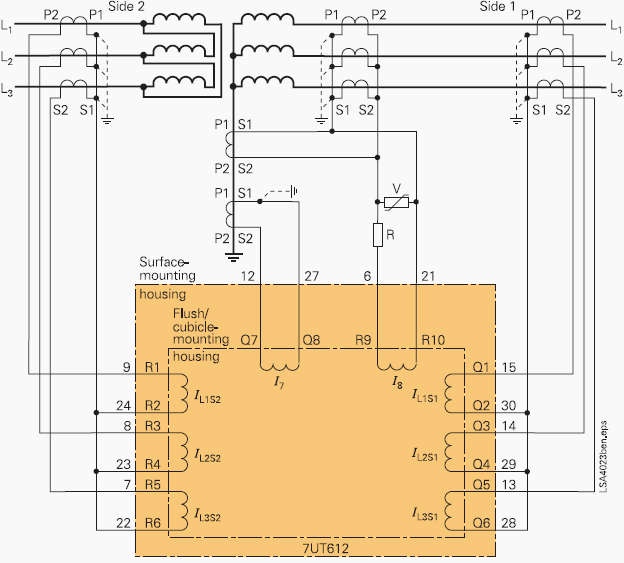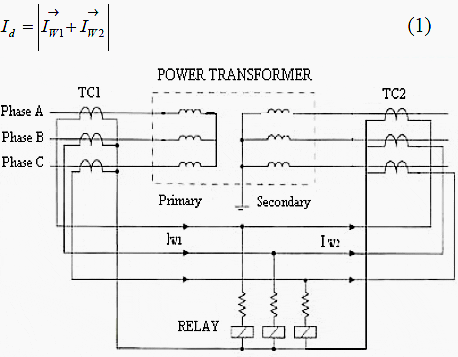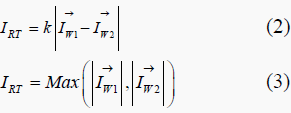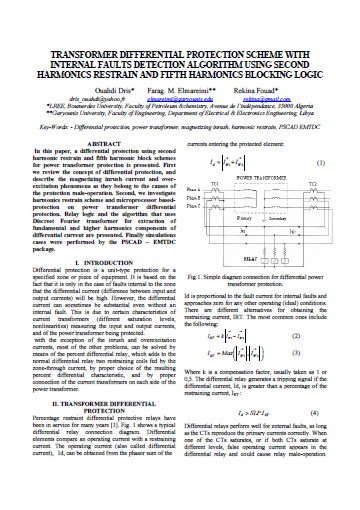
Introduction
Differential protection is a unit-type protection for a specified zone or piece of equipment. It is based on the fact that it is only in the case of faults internal to the zone that the differential current (difference between input and output currents) will be high.
However, the differential current can sometimes be substantial even without an internal fault.
With the exception of the inrush and overexcitation currents, most of the other problems, can be solved by means of the percent differential relay, which adds to the normal differential relay two restraining coils fed by the zone-through current, by proper choice of the resulting percent differential characteristic, and by proper connection of the current transformers on each side of the power transformer.
Percentage restraint differential protective relays have been in service for many years. Figure 1 shows a typical differential relay connection diagram. Differential elements compare an operating current with a restraining current.
The operating current (also called differential current), Id, can be obtained from the phasor sum of the currents entering the protected element:

Id is proportional to the fault current for internal faults and approaches zero for any other operating (ideal) conditions.
There are different alternatives for obtaining the restraining current, IRT. The most common ones include the following:

Where k is a compensation factor, usually taken as 1 or 0,5.
The differential relay generates a tripping signal if the differential current, Id, is greater than a percentage of the restraining current, IRT :
![]()
| Title: | Transformer Differential Protection Scheme With Internal Faults Detection Algorithm Using Second Harmonics Restrain And Fifth Harmonics Blocking Logic – Ouahdi Dris, Farag. M. Elmareimi and Rekina Fouad |
| Format: | |
| Size: | 259.3 KB |
| Pages: | 5 |
| Download: | Right here | Video Courses | Membership | Download Updates |



Which is the fastest transformer protection?
I would like to be updated with new schemes
Am impressed by this information
what’s year of this article?
Good info provided.